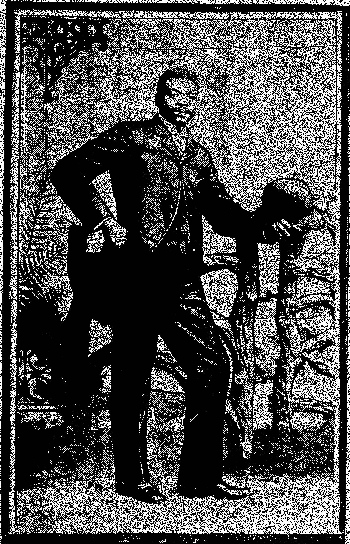 |
Minneapolis Pioneers and Soldiers Memorial Cemetery History Page Alley Article |
| Home | Burial Search | Friends | History | Photo Gallery | Visitor Information |
| Alley Articles |
|
This article originally appeared in the Phillips community's Alley Newspaper, October 2007. 1902 Murder in San Angelo Kitchen Becomes Hallmark Case of Racial Jurisprudence Charles Collins was shot and killed by Herbert Gallehugh on March 7, 1902. The shooting took place in the kitchen of the San Angelo Hotel which was located at 1221 Nicollet Avenue. Collins was employed at the hotel as a chef where one of his co-workers was Ida Gallehugh, the wife of the man who shot him. Based on the testimony of those who witnessed the shooting, it should have been an open-and-shut case. Gallehugh had shot Collins in front of several witnesses who were prepared to refute Gallehugh’s claim that he had killed Collins in self defense. But it was 1902--the victim was African-American and the man on trial was white, and the local African-American community was rightly concerned about whether justice would be served. In an unusual move, members of the African-American community raised funds to hire an attorney to assist the government lawyers who were prosecuting the case. The trial was, according to the papers, “one of the most interesting ones of the criminal history of Hennepin county.” Charles Collins had lived in Minneapolis for sixteen years but had only worked at the hotel for a few months. Before that he had worked as a chef on the Northern Pacific Railroad. He had recently become engaged to Annie Chambers, and he was by all accounts an upstanding member of the community. The defendant, Herbert Gallehugh, was a railroad worker who had fallen on hard times. His wife had gone to work at the hotel because he was out of work and they were deeply in debt. Other than the fact that his wife worked with Collins for about a week, Gallehugh had no known connection to Collins. Gallehugh’s lawyers argued that he had killed Collins in self defense after he had confronted Collins about “insults” that Collins had directed toward Ida Gallehugh. According to Herbert Gallehugh, Collins walked toward him carrying a knife, so he shot him in self-defense. The trial began five weeks after the shooting occurred. Jury selection took five days. It was a long process because prospective jurors had to demonstrate that they were not racially prejudiced and that they were not opposed to the death penalty. Although African-Americans had had the legal right to sit on juries in Minneapolis for several decades, they were rarely selected as jurors in murder cases because many of them were opposed to the death penalty. When the process was completed, the jury consisted of twelve white men. The trial took less time than jury selection. Testimony began on April 22nd, and the jury announced its verdict on April 25th. One juror reported that they had actually reached the verdict on the evening of the 24th, shortly after the trial closed, but that they did not announce their it then because “they thought it best that they should not have it appear that they had decided the case without deliberation.” They had taken three votes. The first was whether Herbert Gallehugh had shot and killed Charles Collins, a fact that was obvious. The second vote was about whether or not the shooting was premeditated, and only one juror agreed that it was. The third vote, for second degree murder, was unanimous. On April 25th, Herbert Gallehugh was convicted of second degree murder, and sentenced to life at hard labor—a grim prospect for Gallehugh, who was only 25 years old at the time. The murder of Charles Collins, as is true of all murders, was a senseless crime. If it can be said that any good came out of it, it was that the African-American community received, in some small measure, the justice that they had sought for a valued member of their community. Charles Collins is buried in the second grave from the northeast corner of Lot 16, Block i-1 in Minneapolis Pioneers and Soldiers Memorial Cemetery.
Next Article -> John Smith -- November 2007 |
|
©Friends of the Cemetery, 2005-2008 Contact us at history@friendsofthecemetery.org |
File last updated: Wednesday January 23, 2008 |
